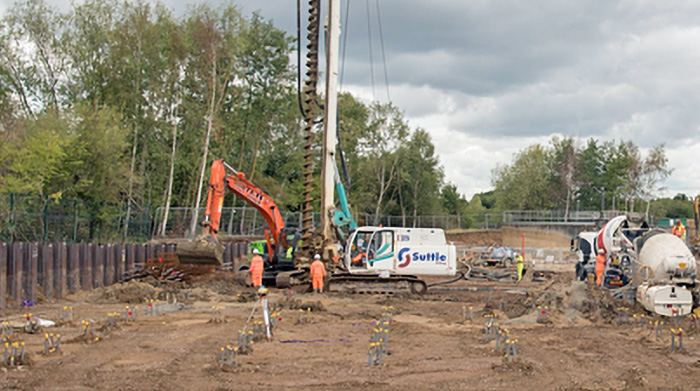
Keleher Water Treatment Works
South East Water planned to expand their water treatment works at Keleher, near Bray, to increase the amount of water that could be treated to 68 million litres per day. As part of this work a new process stream was to be constructed, consisting of clarifiers, rapid gravity filters and GAC absorbers. Also, work included modifications to the existing pumping, ozone treatment and sludge handling.
Suttle Piling were contracted to design and install the Continuous Flight Auger bearing piles.
Our technical office designed the piles to be acting as mainly end-bearing on the granular layer, which avoided interfering with the more compressible stiff clay layer beneath it. A minimum distance between the toe of the pile and the head of the clay was provided for and individual design resistances, in compression of each pile, were dependent on their diameter and cut-off level.
The installation of the 270 bearing piles involved utilising our Casagrande B125 and Klemm 708 piling rigs. The piling work was split into nine sections and piles were cast at 300mm, 450mm and 500mm diameter, to varying depths across the site. Pile positions were marked out on site and the augers were lined up centrally over the pile locations. When the auger had penetrated to the correct depth, the concrete was pumped into the hole and the auger was gradually retracted from the pile. The pile was then cleared by mini excavator and, once exposed, a reinforcement cage was inserted into the pile.
Extra care was required on the site due to the presence of gas, and some bound asbestos in the soil. The site was also located within a Groundwater Source Protection Zone, therefore, with the piles proposed to extend beneath the groundwater levels within the upper and lower aquifers, it was important that contamination was minimised. We used soil bunds around the concrete pumps to reduce the mobility of any potential spill. In the end this sensible measure did not prove necessary.



Good value, high quality materials and service